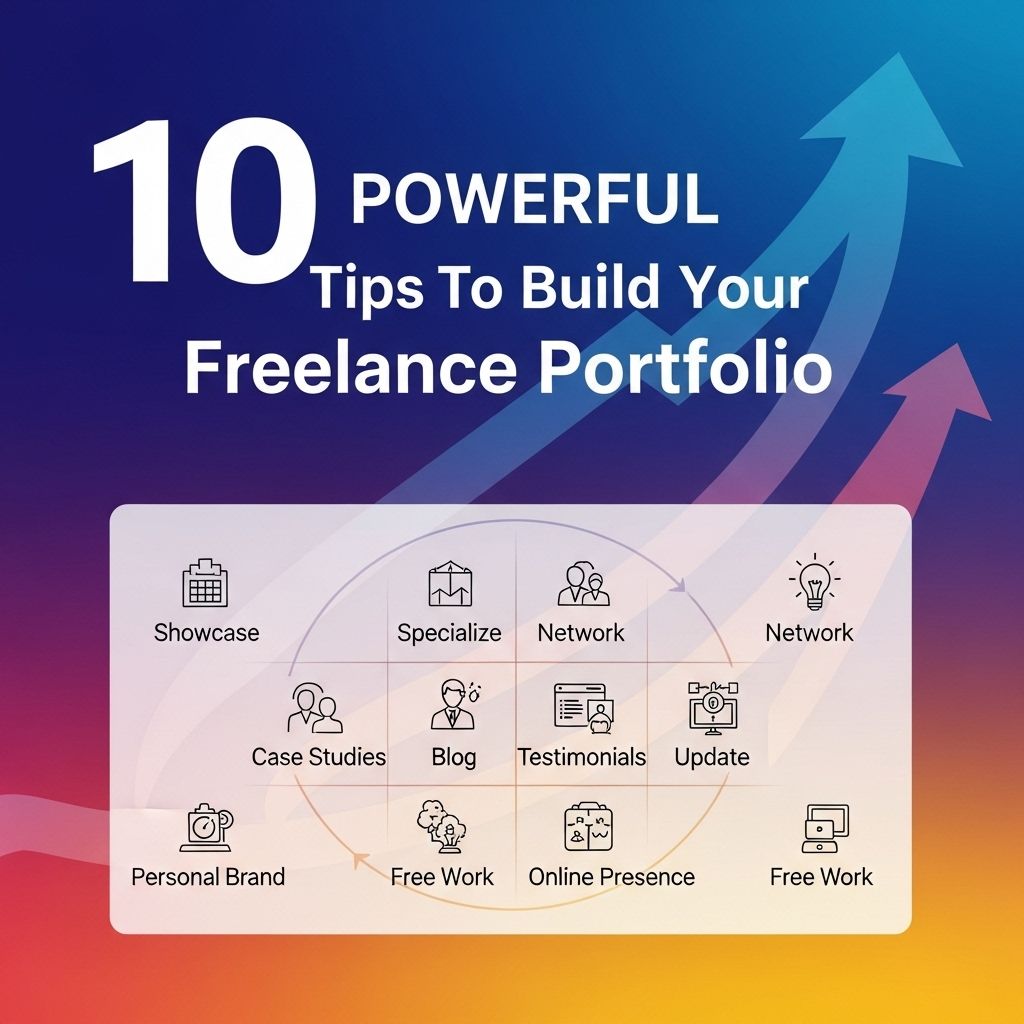In the competitive world of freelancing, a strong portfolio is essential for attracting clients and showcasing your skills. Your portfolio is often the first impression potential clients will have of your work, so it’s important to get it right. This article provides you with powerful tips on how to build an impressive freelance portfolio that not only highlights your best work but also reflects your unique style and brand identity.
Understanding the Purpose of a Portfolio
Before diving into the tips, it’s crucial to understand why a portfolio is important. A well-constructed portfolio serves multiple purposes:
- Showcase of Skills: It highlights your abilities and expertise in your field.
- Client Trust: A professional portfolio builds trust with potential clients.
- Personal Branding: It helps establish your personal brand and unique selling proposition.
Now that we understand the importance, let’s explore the tips.
1. Choose the Right Platform
Your choice of platform can significantly impact how your work is presented. Some popular platforms include:
- Personal Website: Offers complete control over design and content.
- Behance: Ideal for creative professionals in design and photography.
- GitHub: Essential for developers to showcase code.
Consider your target audience and select a platform that resonates with them.
2. Select Your Best Work
Quality over quantity is the mantra for a successful portfolio. Follow these guidelines for selection:
- Choose projects that demonstrate a variety of skills.
- Include only the work you are proud of; remove older or less impressive pieces.
- Highlight projects that align with the type of clients you want to attract.
3. Craft Compelling Case Studies
Instead of just showcasing images or links, create case studies that explain your process. Consider including:
- Project Overview: Briefly describe the project and its objectives.
- Your Role: Explain your contributions and responsibilities.
- Challenges and Solutions: Discuss obstacles you faced and how you overcame them.
- Results: Include metrics or testimonials that validate your work.
4. Showcase Testimonials and Client Feedback
Client testimonials add credibility to your portfolio. Here’s how to effectively showcase them:
- Include direct quotes from clients about their experience working with you.
- Use their names and companies for authenticity.
- Consider adding a dedicated testimonials section on your website.
5. Keep It Updated
A stagnant portfolio can send the wrong message. Regularly updating your portfolio is crucial. Consider these tips:
- Set a schedule to review and update your portfolio (e.g., quarterly).
- Add new projects that are completed, and remove outdated work.
- Incorporate any new skills you have learned or certifications you have obtained.
6. Use High-Quality Visuals
In the tech-savvy world, visuals can make or break your portfolio. Ensure you:
- Use high-resolution images that are professionally presented.
- Incorporate videos or interactive elements if relevant.
- Maintain a consistent style that reflects your brand.
7. Incorporate Your Personal Brand
Your portfolio should reflect your unique identity. Here’s how to build your brand:
- Choose a color palette and typography that resonate with your style.
- Include an “About Me” section where you share your story and expertise.
- Maintain a consistent tone and voice throughout your content.
8. Optimize for SEO
To ensure your portfolio reaches the right audience, optimize it for search engines:
- Use relevant keywords in your project descriptions.
- Include alt tags for images to improve searchability.
- Link to your social media profiles for added networking opportunities.
9. Network and Promote Your Portfolio
Creating a stunning portfolio is just the beginning. To attract clients, you need to actively promote it:
- Share your portfolio on social media platforms.
- Join freelance marketplaces and link to your portfolio.
- Participate in online communities relevant to your field.
10. Gather Feedback and Iterate
Lastly, seek feedback from peers and mentors to improve your portfolio. Here’s how:
- Ask colleagues to review your portfolio and provide constructive criticism.
- Participate in online forums or groups to gather broader feedback.
- Continuously iterate and refine your portfolio based on insights received.
Conclusion
Building a compelling freelance portfolio can be a game-changer in your career. By following these ten powerful tips, you can create a portfolio that not only showcases your skills but also helps you stand out in the crowded freelance marketplace. Remember, your portfolio is a living document that reflects your journey, so keep it updated and aligned with your professional growth.
FAQ
What is a freelance portfolio?
A freelance portfolio is a collection of your best work and projects that showcases your skills, experience, and style to potential clients.
How many projects should I include in my portfolio?
Aim to include 5 to 10 of your best projects that demonstrate a range of your skills and expertise, ensuring quality over quantity.
Should I include personal projects in my freelance portfolio?
Yes, including personal projects can highlight your creativity and passion, especially if they align with the type of work you want to pursue.
How can I make my freelance portfolio stand out?
Use high-quality visuals, write compelling project descriptions, and ensure your portfolio is easy to navigate to make it stand out.
What platforms are best for showcasing my freelance portfolio?
Popular platforms include personal websites, Behance, Dribbble, and LinkedIn, each catering to different types of creative work.
How often should I update my freelance portfolio?
Regularly update your portfolio to reflect your latest work and skills, ideally every few months or after completing significant projects.




